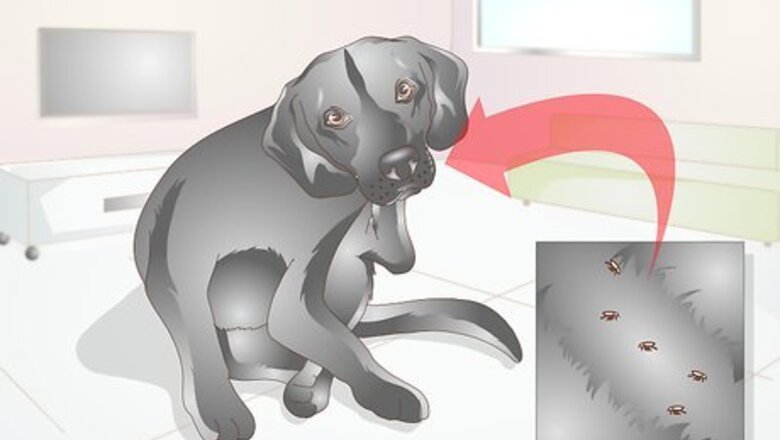
views
X
Research source
Whether the infection is in an adult dog or a puppy, it's important to get the problem treated effectively.
Diagnosing a Tapeworm Infection
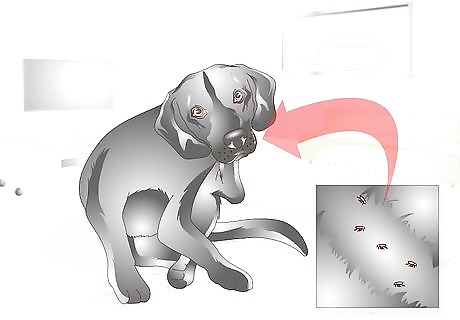
Figure out if your dog is at risk for tapeworm. Some dogs are more at risk than others of picking up tapeworms. To become infected the dog needs contact with an "intermediate" host. These intermediate hosts are fleas and vermin, such as mice and rats. If your dog has fleas, there is a good chance it could acquire a tapeworm infection. If it grooms itself and swallows a flea its digestive juices will break down the protective shell of the egg packet and release the eggs into the bowel, where they grow into an adult tapeworms. Likewise if the dog is a hunter or scavenger and eats mice or rats, he will ingest tapeworm larvae that have formed cysts within the vermin's body tissue, and when the dog eats the encysted larvae they can go on to become adult tapeworms. A dog cannot become infected by contact with the egg packets passed from his own anus, because the egg packets need to pass through the intermediate host to reach the stage where they are infectious to dogs.

Look for tapeworm eggs. The most obvious sign your dog has tapeworm is if you see the tapeworm eggs packet near the dog's anus or on its bedding. These egg packets can be white, creamy, golden, or gray colored, and vary in size between a cucumber seed and a sesame seed. They are variously described as looking like a small grain of rice or sesame seeds. If the eggs are newly passed, if you look closely you may see them wriggling. If the eggs are older they dry out and then look more like sesame seeds. The life cycle of the tapeworm means the adult worm within the dog's gut, releases these egg packets (also called proglottids) intermittently. These then migrate down through the gut and out of the dog's anus, ready to contaminate the environment and be a source of infection for the intermediate hosts (fleas or vermin).
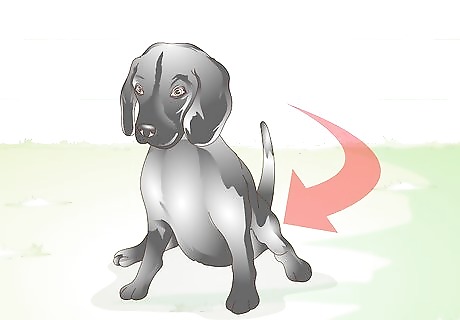
Pay attention if your dog is dragging its bottom along the ground. This migration irritates the lining of the rectum and anus, making it itchy and causing some dogs to scoot their bottoms along the ground. However, be aware that scooting can have other reasons beside tapeworm infection, such as full anal sacs or allergic skin conditions.
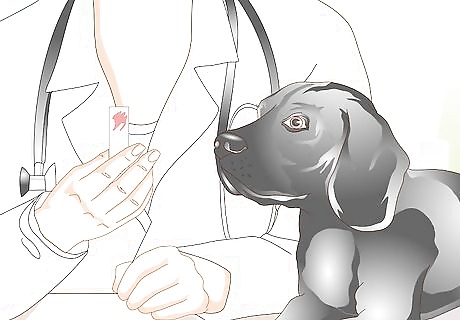
Take your dog to the vet if you suspect tapeworm. Your vet can check for tapeworm infection by examining a fecal sample under a microscope to look for tapeworm eggs. However, it is possible to get false negatives because the adult tapeworm does not shed proglottids (the packet contained eggs) all the time but does so intermittently.
Treating a Tapeworm Infection
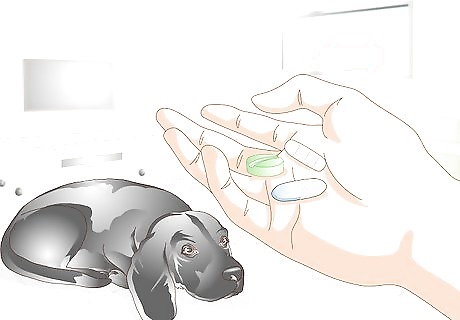
Give your dog a deworming medicine. Tapeworms are destroyed by specific deworming preparations containing the active ingredient praziquantel. This drug works by making the outer membrane of the tapeworm leaky, which allows nutrients to leak out and the tapeworm to die. A new drug is now available, Epsiprantel, which has a similar activity to praziquantel, but is not yet in widespread use. Praziquantel is effective against all species of tapeworm, which makes it your first choice dewormer. However, a different drug called dichlorophen has limited action and will destroy 2 of the 3 main tapeworm species. Unfortunately the species it doesn't kill is Echinococcus, which under exceptional circumstances can be a risk to human health and is therefore not such a good choice.
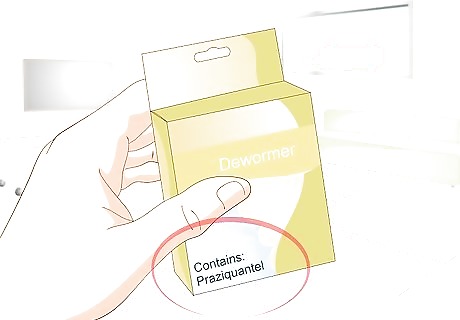
Be aware that not all deworming products contain praziquantel. Always check the packaging to see if they are covered. Look for specific wording on the pack that says the product is effective against tapeworms and check that praziquantel is among the active ingredients. For example, a product such as Panacur contains fenbendazole only, which is not effective against tapeworm. The drawback of praziquantel is that it is not effective against roundworms and other common worms, therefore many deworming tablets are made up of two deworming ingredients. For example, Drontal contains praziquantel and pyrantel, Milbemax contains praziquantel and milbemycin, and Prazitel Plus contains pyrantel, praziquantel, and febantel. Also be aware that many common spot-on parasite treatments that are highly effective against other species, do NOT work against tapeworm.
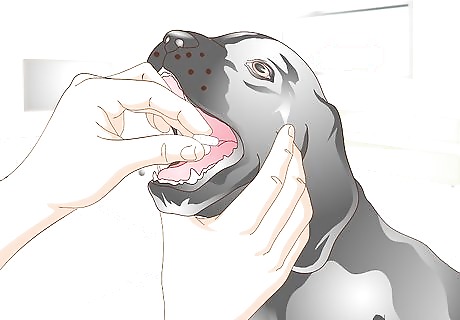
Give your dog the proper dosage of medication. Tapeworm treatments are most widely available in tablet form. Accurately weigh your dog, if necessary visit a veterinary clinic and weigh the dog on the scale there. Then carefully follow the dosage instruction on the packaging to make sure the dog has the correct dose. Be aware that the medication kills any infection the dog currently has, but the treatment has no lasting effect and therefore does not protect the dog against repeat infection. There is also an injectable form of praziquantel, Droncit. This injection can sting and if you have a large dog it will need a relatively large volume of injection, which can be uncomfortable.

Follow your veterinarian's directions for how long and how often to give tapeworm medication. How often to give your dog a tapeworm treatment is controversial and usually judged on an individual basis. If your dog is in a high risk group, such as a hunting dog or a dog that has regular flea infestations, then monthly tapeworming is advisable. If your dog is at low risk such as an indoor dog that has regular flea treatments then speak to your vet and follow their advice.

Prevent future tapeworm infection. A large part of preventing infection is removing access to the intermediate hosts. This is done through regular monthly treatments with an effective flea product to ensure your dog does not harbor the intermediate host. Also, prevent access to vermin or carcasses so that the dog cannot scavenge and eat the encysted larval forms.
















Comments
0 comment